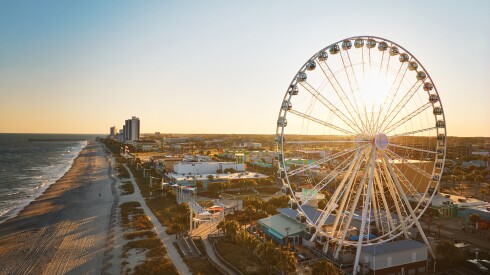In the 1870s, an intrepid woman from Yorkshire, England, set off to explore a part of Japan few tourists had seen: the highlands. The adventurous spirit that drove Isabella Lucy Bird to take on the remote interior on foot and solo is what inspired Lucy, a new hotel chain by Hoshino Resorts. Here, guests will sleep among the expansive and yet still largely unfrequented mountains of Honshu, the main island of Japan.
“Mountain tourism has long existed in Japan, but it’s still unfamiliar to many international travelers,” Mei Murashima, Lucy’s branding manager, told Afar. The forthcoming alpine hotels aim to bridge that gap, “making nature exploration both accessible and comfortable for travelers seeking activities like hiking and mountain climbing.”
Its debut property, Lucy Ozehatomachi, is already available to book and slated to open its doors September 1 in the Gunma prefecture. The minimalist mountain lodge sits right at the Hatomachi Pass trailhead in Oze National Park, a high-altitude marshland surrounded by verdant slopes and an extinct volcano. The park is about 100 miles northwest of Tokyo and spreads to four prefectures: Fukushima, Tochigi, Gunma, and Niigata.

Lucy will have sleek, wooden bunk bed options for those looking to upgrade from “roughing it” on a mountain trek.
Courtesy of Hoshino Resorts
According to Murashima, Oze is a favorable locale for Lucy’s inaugural hotel because the terrain is gentle enough for hikers of all levels. While there are several accommodations in the national park, traditional lodgings here were bare-bones mountain huts intentionally designed for discomfort for religious reasons. “Since ancient times in Japan, it has been believed that gods reside in the mountains,” Murashima says. The yamabushi, who are practitioners of a religion called Shugendō that combines aspects of Shintoism and Buddhism, would journey to these mountains for prayer and stay in the communal huts to test their faith.
The new 25-room hotel pays homage, in a way, to the mountain huts of Oze’s past—albeit in a far more comfortable manner. It offers dorm-style rooms ideal for the solo traveler, plus two- and four-person rooms, both with bunk beds. Guests share access to the bathrooms, which, in addition to shower stalls, have subtle luxuries like warm-water bidets. Unlike the mountaineers of yore, Lucy guests have a choice of dining options, including the hotel’s nightly dinner—featuring the regional specialty, tonjiru (pork miso soup)—an on-location convenience store open 24/7, and a café offering coffee and soft serve next door.

Tonjiru is a pork miso soup from the region offered to guests at the hotel.
Courtesy of Hoshino Resorts
In addition to the hikes that start right outside, buses and shuttles transport guests from the hotel to trails deeper in the 92,000-acre national park. Murashima recommends visiting in the summer (especially in June) for wildflowers and the best weather. The season runs from September 1 to October 25 this year before closing for the winter. With the exception of some dorm beds that are still available, the current year is completely booked. Hoshino Resorts has yet to announce next year’s dates or when bookings will open for the 2026 season.
A second property, Lucy Tateyama, is already in the works within Chubu-Sangaku National Park in Toyama Prefecture. Murashima said the Lucy chain will eventually spread across the entire archipelago of Japan, for better access to the country’s 35 national parks and more than 12,000 mountains.








